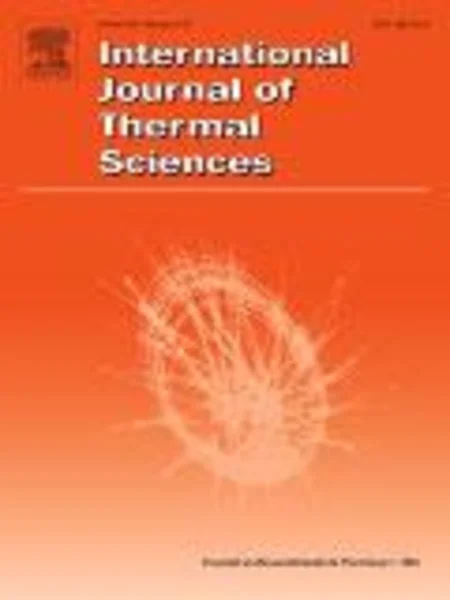-
experimental and theoretical investigation of thermal performance of underground cold-water reservoirs
جزئیات بیشتر مقاله- تاریخ ارائه: 1390/01/01
- تاریخ انتشار در تی پی بین: 1390/01/01
- تعداد بازدید: 560
- تعداد پرسش و پاسخ ها: 0
- شماره تماس دبیرخانه رویداد: -
thermal performance of a traditional, underground cold-water reservoir (cistern) is investigated both experimentally and analytically. an innovative analytical solution technique for determination of the temperature distribution in the reservoirs is developed by employing a linearized boundary condition at the water surface. the theoretical predictions are then compared with the extensive experimental measurements obtained in a traditional underground cold-water reservoir located in the city of yazd in central region of iran. good agreement between the analytical and the experimental results demonstrates the validity of the proposed analytical solution method. both the experimental data and analytical results show that a stable thermal stratification develops within the water reservoir and is preserved throughout the entire course of water withdrawal cycle. both results demonstrate that while the outside ambient temperature reaches 42 °c during the summer time, cool drinking water with the temperature ranging from 12 to 13 °c is readily available from the water withdrawal tap of the reservoir. parametric studies show that decreasing induced wind velocity over the water surface or increasing the ambient temperature leads to an increase in the top water layer temperature, while the bottom water layers are not significantly affected. this finding is important as it confirms that the traditional cold storage reservoirs are capable of protecting the bottom cold-water layers from harsh outdoor environment. further, it is observed that for these water reservoirs and for selected storage aspect ratios beyond one, bottom layers temperatures are not influenced by the variation of the reservoir aspect ratio. utilizing the experimental results, an energy and exergy analysis shows that around 80% of the cooling capacity stored in the winter can be retrieved during the summer time at a desired temperature. comparing the exergy content of the stratified reservoir with that of the fully mixed tank shows that the formation of stable thermal stratification is responsible for preserving the quality of the extracted cold energy.
حوزه های تحت پوشش رویداد
مقالات جدیدترین رویدادها
-
استفاده از تحلیل اهمیت-عملکرد در ارائه الگوی مدیریت خلاقیت سازمانی و ارائه راهکار جهت بهبود
-
بررسی تاثیر ارزش وجوه نقد مازاد بر ساختار سرمایه شرکت های پذیرفته شده در بورس اوراق بهادار تهران
-
بررسی تأثیر سطح افشای ریسک بر قرارداد بدهی شرکت های پذیرفته شده در بورس اوراق بهادار تهران
-
بررسی تأثیر رتبه بندی اعتباری مبتنی بر مدل امتیاز بازار نوظهور بر نقد شوندگی سهام با تأکید بر خصوصی سازی شرکت ها
-
تأثیر آمیخته بازاریابی پوشاک ایرانی بر تصویر ذهنی مشتری پوشاک ایرانی (هاکوپیان)
-
چگونه توانستم میزان علاقه مندی و یادگیری دانش آموزان پایه ی سوم ابتدایی در درس هدیه های آسمان را بیشتر کنم؟
-
بازی های دیجیتال؛ گفتمان سرمایه داری و فرهنگ مصرفی
-
حساسیت سنجی پارامترهای مقاومت برشی خاک بر نیروی کششی میخها در دو حالت دینامیکی و استاتیکی در تسلیح خاک به روش میخکوبی
-
بررسی آزمایشگاهی عملکرد ضرب های دال های بتنی مسلح شده به میلگرد gfrp
-
بررسی رابطه بین هوش هیجانی و مهارت های اجتماعی با اضطراب اجتماعی دانش آموزان دختر دوره متوسطه دوم شهر خدابنده
مقالات جدیدترین ژورنال ها
-
مدیریت و بررسی افسردگی دانش آموزان دختر مقطع متوسطه دوم در دروان کرونا در شهرستان دزفول
-
مدیریت و بررسی خرد سیاسی در اندیشه ی فردوسی در ادب ایران
-
واکاوی و مدیریت توصیفی قلمدان(جاکلیدی)ضریح در موزه آستان قدس رضوی
-
بررسی تاثیر خلاقیت، دانش و انگیزه کارکنان بر پیشنهادات نوآورانه کارکنان ( مورد مطالعه: هتل های 3 و 4 ستاره استان کرمان)
-
بررسی تاثیر کیفیت سیستم های اطلاعاتی بر تصمیم گیری موفق در شرکتهای تولیدی استان اصفهان (مورد مطالعه: مدیران شرکتهای تولیدی استان اصفهان)
-
نقش زنان در دستیابی و حفاظت محیط زیست
-
فقه امامیه و بانکداری اسلامی
-
مدل سازی تاثیر پارامترهای فیزیکی سطح و سیال بر خوردگی شناورها با استفاده از نرم افزار کامسول
-
ابعاد، خصوصیات و ویژگی های هوش هیجانی از منظر اسلام
-
seismic loss assessment: the case study of the power distribution network in arak city, iran




سوال خود را در مورد این مقاله مطرح نمایید :